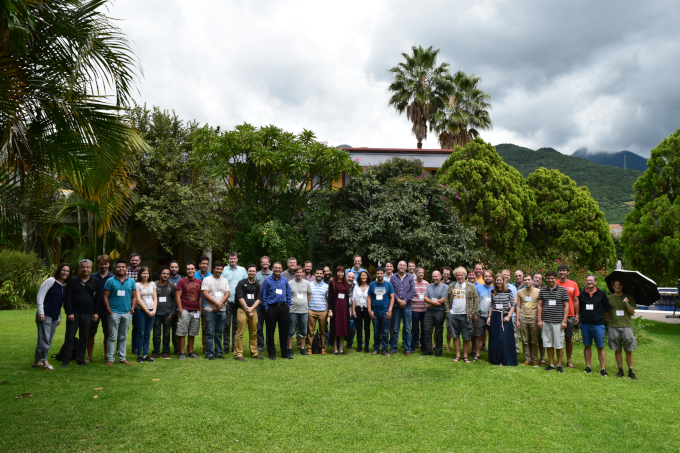Helly and Tverberg type Theorems (19w5028)
Organizers
Deborah Oliveros (UNAM)
Imre Bárány (Alfred Renyi Institute)
Luis Montejano (UNAM)
Janos Pach (Renyi Institute of Mathematics)
Description
The Casa Matemática Oaxaca (CMO) will host the "Helly and Tverberg type Theorems; Mass partitioning and Rado's Central type Theorems in Geometry, Combinatorics and Topology IV" workshop in Oaxaca, from October 6, 2019 to October 11, 2019.
One of the most beautiful theorems in combinatorial convexity is due to Tverberg (1966). Nowadays Tverberg’s theorem still remains central and is one of the most intriguing results of combinatorial geometry. It has been shown that there are many close relations between Tverberg’s theorem and several important results in mathematics, such as: Rado’s Centre Point Theorem on general measures, the Ham Sandwich Theorem and the Four Color Theorem, just to mention some examples. Furthermore this theorem is closely connected with the multiplied or colorful versions of the theorems of Helly, Hadwiger and Caratheodory, that have multiple generalizations, applications and have motivated several open problems in discrete geometry. In the last two decades there has been an increasing amount of work that involve the use of new techniques in algebraic topology and other areas of mathematics. The proposed workshop will assemble the key people working in this area, in order to explore recent progress and to help focus on future directions of research.
The Casa Matemática Oaxaca (CMO) in Mexico, and the Banff International Research Station for Mathematical Innovation and Discovery (BIRS) in Banff, are collaborative Canada-US-Mexico ventures that provide an environment for creative interaction as well as the exchange of ideas, knowledge, and methods within the Mathematical Sciences, with related disciplines and with industry. The research station in Banff is supported by Canada's Natural Science and Engineering Research Council (NSERC), the U.S. National Science Foundation (NSF), Alberta's Advanced Education and Technology, and Mexico's Consejo Nacional de Ciencia y Tecnología (CONACYT). The research station in Oaxaca is funded by CONACYT






